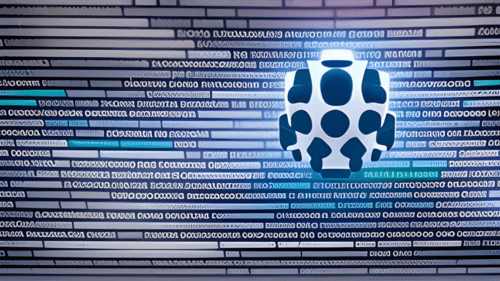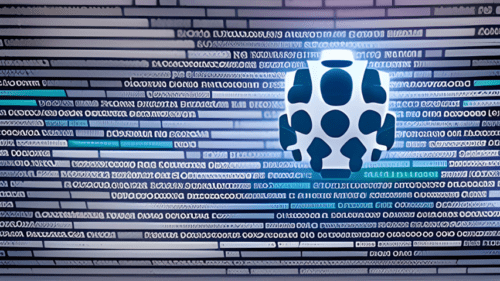Artificial Intelligence Essay: Unraveling the Wonders of AI in Modern Society
In today’s rapidly evolving technological landscape, one term that consistently makes waves is “Artificial Intelligence” or AI. This groundbreaking technology has transformed the way we live, work, and interact with the world around us. From self-driving cars to personalized recommendations on streaming platforms, AI has seamlessly integrated itself into various aspects of our daily lives. In this essay, we will delve deep into the intricacies of artificial intelligence, exploring its origins, current applications, ethical considerations, and potential for the future.
Table of Contents 1. Introduction to Artificial Intelligence 2. Historical Evolution of AI 3. Types of Artificial Intelligence 4. Current Applications of AI 5. AI in Healthcare 6. AI in Business and Finance 7. Ethical Dilemmas in AI Development 8. Bias and Fairness in AI Algorithms 9. The Future of AI: Possibilities and Challenges 10. Impact of AI on Employment 11. AI and Creativity: Can Machines Truly Create? 12. Human-AI Collaboration: A Symbiotic Relationship 13. The Roadmap to Ethical AI Development 14. Conclusion
Introduction to Artificial Intelligence Essay
Artificial Intelligence, often abbreviated as AI, refers to the simulation of human intelligence in machines that are capable of learning, reasoning, problem-solving, and decision-making. It encompasses a wide range of technologies, including machine learning, neural networks, and natural language processing, among others. AI systems are designed to analyze vast amounts of data, recognize patterns, and make predictions or decisions based on their findings.

Historical Evolution of Artificial Intelligence Essay
The concept of artificial intelligence dates back to ancient civilizations, where myths and stories portrayed human-like machines. However, the modern foundation of AI was laid in the mid-20th century when computer scientists began exploring the possibility of creating machines that could mimic human intelligence.
Types of Artificial Intelligence Essay
AI can be categorized into narrow or weak AI and general or strong AI. Narrow AI is designed to perform a specific task, such as voice assistants or recommendation systems. In contrast, general AI would have human-like intelligence and the ability to perform any intellectual task that a human can do.
Current Applications of AI
AI has permeated numerous industries, bringing unprecedented advancements. In healthcare, AI is revolutionizing diagnostics, drug discovery, and personalized treatment plans. It is also streamlining business operations, automating tasks, and enhancing customer experiences.
AI in Healthcare
AI-driven diagnostic tools can analyze medical images with incredible accuracy, aiding doctors in early disease detection. Furthermore, predictive analytics enable the identification of potential outbreaks and the optimization of hospital resource allocation.
AI in Business and Finance
Financial institutions utilize AI algorithms for fraud detection, risk assessment, and algorithmic trading. Chatbots powered by AI enhance customer service, providing real-time assistance and information.

Ethical Dilemmas in AI Development
While AI has undoubtedly brought significant advancements, it also raises ethical concerns. The issue of bias in AI algorithms, which can perpetuate societal inequalities, is a pressing concern. Developers must ensure that AI systems are trained on diverse datasets to mitigate bias.
Bias and Fairness in Artificial Intelligence Essay Algorithms
AI algorithms can inadvertently reflect the biases present in their training data, leading to discriminatory outcomes. It is crucial to implement mechanisms that detect and rectify these biases to ensure fairness and equity in AI applications.
The Future of AI: Possibilities and Challenges
As AI continues to evolve, its potential appears limitless. However, challenges remain, such as ensuring the safety of AI systems, addressing job displacement due to automation, and maintaining ethical standards in AI development.
Impact of AI on Employment
The integration of AI in industries may lead to job displacement, especially for tasks that can be automated. However, it also opens new avenues for employment in AI-related fields, such as data science and machine learning.
AI and Creativity: Can Machines Truly Create?
The realm of creativity was once considered uniquely human. However, AI-generated artworks, music, and literature are blurring the lines between human and machine creativity, raising intriguing questions about the nature of artistic expression.
Human-AI Collaboration: A Symbiotic Relationship
Rather than viewing AI as a replacement for humans, it is more fruitful to consider the potential of human-AI collaboration. AI can augment human abilities, enabling us to tackle complex problems and make more informed decisions.
The Roadmap to Ethical AI Development
To ensure the responsible development of AI, ethical considerations must be at the forefront. Transparent decision-making processes, accountability, and ongoing monitoring are essential to build AI systems that benefit society as a whole.
Conclusion
Artificial Intelligence Essay stands at the crossroads of technological innovation and ethical responsibility. Its transformative potential has the power to reshape industries, improve lives, and solve complex challenges. As we navigate the intricate landscape of AI development, it is imperative that we strike a balance between innovation and ethical considerations to create a future where AI enhances human existence.
FAQs
- What is Artificial Intelligence? Artificial Intelligence refers to the simulation of human intelligence in machines, enabling them to learn, reason, and make decisions.
- What are the types of AI? AI can be categorized as narrow AI (task-specific) and general AI (human-like intelligence).
- How is AI used in healthcare? AI is used in healthcare for diagnostics, personalized treatment plans, and predicting disease outbreaks.
- What is bias in AI algorithms? Bias in AI algorithms refers to the unfair and discriminatory outcomes that result from inherent biases in the training data.
- How can humans collaborate with AI? Human-AI collaboration involves using AI to enhance human abilities and solve complex problems.
Read our other blogs

2 thoughts on “Artificial Intelligence Essay: Unraveling the Wonders of AI in Modern Society”